FLORENCE & TUSC ANY
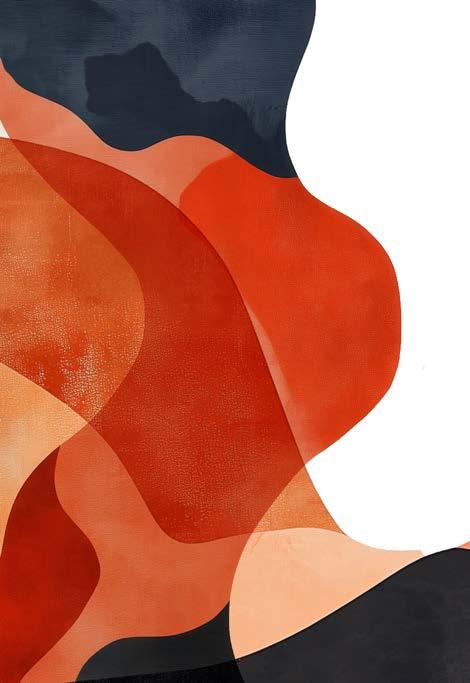
breaking through the layers you didn’t know were holding you back.



breaking through the layers you didn’t know were holding you back.

Summer is the season of full light — the kind that gently touches the ancient stones of Florence, reflects off the marble of the Duomo, and dances along the folds of Renaissance palaces and streets still marked by history. But this season also brings another kind of light: an inner one, calling us to awaken our senses, to slow down, and to experience the city with a more mindful gaze. In a time where speed and distraction seem to rule our days, Florence offers us a lesson in presence. Walking through its streets becomes an act of listening: the sound of footsteps on cobblestones, the scent of lime trees in bloom, the sunset light painting the facades in gold. Every corner can be a small revelation, if we are willing to notice it. This summer, more than ever, Florence is alive with events, exhibitions, concerts, and cultural happenings designed to engage and inspire. Precious occasions not only to celebrate beauty, but also to reflect on the importance of protecting it. To enjoy such an extraordinary place also means to respect it, to protect it, to live it with care. The illumination of the senses is not just a personal experience — it is an act of love toward what surrounds us. It’s recognizing that beauty doesn’t lie only in monuments or masterpieces guarded in museums, but in every detail of Florentine daily life: in a window opened onto a hidden courtyard, in a coffee sipped slowly, in a glance shared with someone passing by on the street. There’s beauty all around you. It’s up to us to choose it, to live it, and to protect it.
ELITISM FLORENCE
There’s beauty all around you. Issue n° 31 july | August | September 2025 Quarterly ~ Florence ~ Italy
EDITOR
Francesca Querci
VICE - EDITOR
Francesca Cellini
DESIGN
Bianca Tozzi
CONTRIBUTORS
Serena Becagli, Sabrina Carollo, Marta Matteini, Cristina Tedde, Alice Dini, Gabriele Merlini, Viola Rosai
PHOTO CREDITS
Giulia Vezzosi
TRANSLATIONS NTL traduzioni
PRINTING
CARTOGRAFICA TOSCANA - Pescia (PT) www.cartograficatoscana.com
PUBLISHER
Q sas
Piazzale Donatello 20, 50132 Firenze p.iva 07198480480
Aut.Trib. - Firenze N. 6048 del 14 Aprile 2017
WRITE US AT General: info@readelitism.com Advertising: adv@readelitism.com
ONLINE CONTENT readelitism.com elitismflorenceandtuscany.com
“Twenty years from now you will be more disappointed by the things you didn’t do than by the ones you did do. So throw off the bowlines, sail away from the safe harbor. Catch the trade winds in your sails” - Mark Twain –
You can follow us on:
@elitismflorence
#elitismflorence

Le informazioni diffuse hanno finalità divulgative, le fonti utilizzate riflettono le esperienze e le opinioni degli Autori. link citati e le immagini tratte da altri siti sono proprietà dei rispettivi Soggetti. L’Editore, che ha posto ogni cura nel citare correttamente la fonte, si dichiara disponibile a pubblicare eventuali rettifiche per involontarie citazioni improprie. L’Editore e gli Autori di Elitism declinano ogni responsabilità per uso improprio delle informazioni riportate o da errori relativi al loro contenuto.


VILLA BARDINI
32 + 33
UNA STRADA DA ABITARE: LA NUOVA VIA PALAZZUOLO
DAVIDE STUCCHI, YERVANT GIANIKIAN E ANGELA RICCI LUCCHI
RESPECT FIRENZE



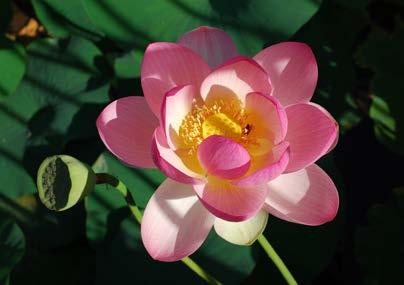
Between late June and mid-July, something extraordinary happens in the green heart of the Medici Park of Pratolino: the surface of the pond that stretches before the Colossus of the Apennines lights up in shades of white, pink, and yellow, heralding the blooming of the lotus.
At a time when most plants have already passed their spring peak, the lotus blossoms — silently and majestically — adding a suspended, ethereal note to the landscape.
Native to Asia, this plant — sacred in Hinduism and Buddhism — is a symbol of purity, rebirth, and inner strength: its roots plunge into the mud, yet the flower rises clean and untouched, as if to remind us that beauty can emerge even from difficulty.
The Pratolino basin, with its shimmering reflections and the towering presence of Giambologna’s Colossus, offers a unique setting to witness this natural phenomenon — drawing photographers, botanists, and curious visitors each year.
In July, the park comes alive with one of the richest cultural programs of the Tuscan summer: “A Park of Music and Other Stories”, a festival promoted by the Metropolitan City of Florence and the Municipality of Vaglia, and coordinated by Music Pool, brings over 30 events to the park — including concerts, theater performances, dance, readings, and artistic happenings.
A mosaic of events that brings together numerous artistic groups and institutions from across the region. Among the most eagerly awaited moments, Musart Festival Firenze returns to Pratolino for its tenth edition, from July 17 to 26, 2025, featuring major names from the Italian music scene: from Loredana Bertè to Roberto Vecchioni, Diodato to Nino D’Angelo, including a symphonic concert by Giovanni Allevi and the highly anticipated reunion of I Gatti Mézzi
All concerts take place outdoors, surrounded by nature, and are preceded by guided tours and convivial moments at the Locanda del Parco.
The Medici Park of Pratolino, a UNESCO site, is owned by the Metropolitan City of Florence and stands as one of Italy’s most fascinating examples of monumental parks.
Parco Mediceo di Pratolino Via Fiorentina 276 - Pratolino (Vaglia - FI) INFO cittametropolitana.fi.it/parco-mediceo-di-pratolino/ Fb @parcodipratolino Ig @parco_mediceo_di_pratolino

The millions of visitors who arrive each year in Piazza del Duomo are captivated by the grand 19th-century façade of the Cathedral — its dazzling mass of marble inlays, statues, and mosaics rises from the square like a monument in its own right, though it remains harmoniously connected to the Bell Tower, the Baptistery, and the older parts of the church to which it belongs.
After the medieval front was demolished in 1587 — and replaced only at the end of the 17th century by a painted architectural backdrop — it wasn’t until the 19th century that a proper façade was finally commissioned. The new structure was built between 1875 and 1887, after a long and complex succession of proposals and competitions, which coincided with the unification of the Kingdom of Italy and, for a time, with Florence becoming the capital.
The final design was created by architect Emilio De Fabris, and the work was financed by a large number of donors.
It was decided that the façade should be in neo-Gothic style, recalling the glorious era of the free Florentine Republic. The most talented artists of the time adorned it with over a hundred sculptures, three large mosaics, and three bronze doors.
This ensemble of figures was organized around an iconographic program developed by De Fabris together with philosopher Augusto Conti
Its central theme is a tribute to the Virgin Mary and the Savior, but it expands into a more complex theological vision in which Christian faith is seen as the source of Florentine and Italian genius.
For this reason, the Virgin and the Saints are depicted alongside the great figures of national history. Within this context, artists occupy a special place, represented in the gallery of portraits at the top register of the façade — a declaration that sacred art is a privileged expression of divine inspiration.
The façade, therefore, is not a mere — though magnificent — scenic backdrop, as today’s culture of superficiality might perceive it, but rather a narrative in stone, rich in memory, thought, and poetry.
duomo.firenze.it


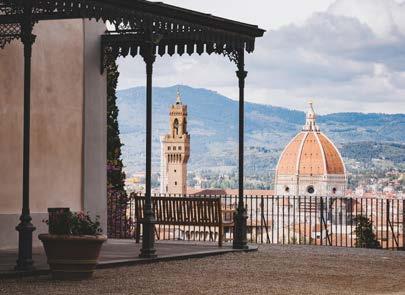
Just a few steps from the vibrant heart of Florence, between Costa San Giorgio and Borgo San Niccolò, lies an enchanting, timeless place: the Bardini Garden.
Overlooking one of the city's most breathtaking panoramas, this green space is a quiet haven, immersed in nature despite being located in the very center of the historic city.
It’s a suspended corner of Florence, where the city reveals its most poetic and authentic soul.
An old guidebook from the late 19th century described it as “a delightful and vast garden, comfortably accessible by carriage despite the steep and rugged slope” — and it remains so today: a spectacular garden that climbs up the hillside and offers a unique view, framed by ancient medieval walls.
The Bardini Garden holds within it seven centuries of Florentine history — a tale of botany, landscape, and aesthetic taste that spans across eras and styles.
In the 17th and 18th centuries, it was a magnificent Baroque garden, enriched with grottoes, statues, fountains, and holm oak groves.
In the 19th century, it embraced influences from Le Blanc’s Anglo-Chinese garden, and later the elegance of Victorian taste, with camellias, peonies, basketshaped flower beds, and romantic rose borders adored by the princes of Carolath-Beuthen
Today, the garden is not only a place of beauty and contemplation — it is a vibrant cultural hub, hosting exhibitions, events, and initiatives dedicated to contemporary art, in constant dialogue with the surrounding history and nature.
A combination that makes this space truly unique, capable of speaking to diverse audiences and different generations.
Villa Bardini and its garden were returned to the city in 2006, following a major restoration project promoted by Fondazione CR Firenze, which still oversees its care today through its dedicated branch, the Fondazione Parchi Monumentali Bardini e Peyron
The Bardini Garden thus continues to thrive under the sign of care, beauty, and memory — a place where Florence rediscovers its soul, season after season.
Villa Bardini
Costa S. Giorgio, 2, Firenze www.villabardini.it

A world made of ideas, stories, people, and gestures — both big and small.
Le Orme del Mugello is a project created to promote slow tourism in a land rich in history, nature, and traditions.
In an age when everything moves fast, this approach invites us to slow down, to experience travel in a more authentic way — respectful of the environment and deeply connected to the places we visit.
With its unspoiled landscapes, forests, streams, centuries-old chestnut groves, and ancient trails, the Mugello is the ideal destination for an experience that engages all the senses.
Walking along its paths means listening to the sounds of nature, noticing the little details — like a butterfly or a monumental tree — and hearing the stories of the people who inhabit this land.
Here, slow tourism is also a form of self-care: through forest bathing, visitors can regain balance and physical and mental well-being.
Mugello offers something for everyone: hiking, cycling, horseback riding, or trekking with your dog, thanks to a well-marked network of trails.
Mountain biking enthusiasts will find routes for all levels — from family rides around Lake Bilancino to technical enduro trails, all immersed in breathtaking scenery.
Horse lovers can explore the SO.F.T. (Sistema Outdoor Firenze Toscana) routes and discover remote corners with the support of local riding centers.
For those traveling with pets, dog trekking is the perfect experience: Mugello’s trails are ideal for shared adventures with your dog, thanks to a range of pet-friendly facilities and services.
The project offers a series of interconnected themed itineraries, ranging from a few hours to multiple days, covering the entire Mugello area and appealing to every interest — from culture, art, and food & wine to wellness and more.
These routes allow visitors to explore local history by following the paths once taken by pilgrims, merchants, soldiers, and farmers — all with the help of printed and digital guides enriched with audio, video, and images.
The trails echo the footsteps of renowned figures who have shaped the region’s history, such as the Medici family, Giotto, Beato Angelico, Giovanni della Casa, and many more.
Along the journey, you can stop in charming villages, farms, and local producers to witness traditional craftsmanship and taste regional cuisine — the fruit of Tuscan-Romagnol heritage.
Mugello’s accommodations welcome walkers, cyclists, and riders with warmth and comfort, turning each day into a treasured memory.
All routes and GPX tracks are available at www. ormedelmugello.com/routes, making it easy to plan your slow tourism experience in the authentic heart of Tuscany.
Visit www.ormedelmugello.it or www. mugellotoscana.it and let yourself be inspired!


From May 31 to September 8, 2025, the Centro per l’Arte Contemporanea Luigi Pecci in Prato presents SMISURATA, an exhibition dedicated to large-scale artworks from its permanent collection, with an installation curated in collaboration with architect Ibrahim Kombarji
The exhibition stems from the need to bring visibility to monumental works that, due to spatial and programming constraints, are rarely displayed in the permanent collection.
Following the success of Eccentrica — the new collection path designed by Formafantasma — Smisurata brings together both historic and contemporary works distinguished by their visual impact, symbolic power, and ability to shape collective imagination
Conceived in dialogue with the museum's architecture and with a strong focus on accessibility, the exhibition reflects the Centre’s mission to be an open space — a
place where art becomes a point of encounter between cultures, languages, and communities.
In Prato, a city home to over a hundred nationalities, this value is even more tangible.
The installations, displayed throughout the spaces designed by Italo Gamberini, offer an immersive and contemplative experience, structured around the gestures of offering and sharing space
Among the featured artists: Mario Merz, Jannis Kounellis, Mimmo Paladino, Enzo Cucchi, Karen Kilimnik, Lorenza Longhi, Marco Bagnoli, Julian Opie, Jacopo Miliani, and many others.
A visual and conceptual journey through works that challenge boundaries and open new perspectives.

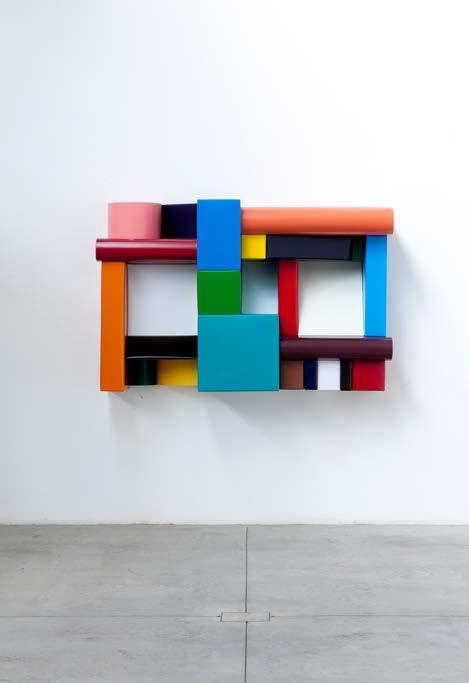
The Centro per l’Arte Contemporanea Luigi Pecci presents two new exhibitions that reflect the museum’s plural identity and political vocation
Light Lights is the first solo institutional exhibition in Italy by artist Davide Stucchi, curated by Stefano Collicelli Cagol.
The show plays on a subtle balance between matter and light, space and perception, immersing visitors in a landscape of light and nearly invisible sculptures made from small hardware, lamps, switches, and everyday objects.
The light in the works is not external but internal, giving the pieces their own autonomy and overturning traditional exhibition logics.
In dialogue with the Nio Small Wing of the museum, the installation invites viewers to explore new ways of inhabiting art — evoking imagined domestic settings and reflecting on the aesthetic value of the everyday. Alongside this research, the museum also welcomes a new acquisition to its collection: the video work
La marcia dell’uomo (The March of Man) by Yervant Gianikian and Angela Ricci Lucchi, acquired through the PAC 2024 grant from the Italian Ministry of Culture
Presented across three large screens, the work delves into the history of Italian colonialism in Africa, offering a critical perspective on the past and its lingering shadows through archival footage.
The exhibition will be accompanied by a video series in the museum’s cinema, focusing on the key themes explored by the two artists: historical memory, migration, conflict, and identity.


IL FORNO Piazza San Marco 9/b - Firenze Tel. 055 280981
Via San Gallo 62/r - Firenze Tel. 055 475975
Viale De Amicis 49/R Tel. 055 669666
IL FORNO BISTROT
Via G. Orsini 63/65 - Firenze Tel. 055 689763
IL CATERING Tel. 055 689763
info@fornopugi.it
EVENTI Tel. 055 689763
locandasantacaterina@gmail.com
www.fornopugi.it
Crossing the threshold of Palazzo Martelli is like embarking on a journey within a journey.
Located at Via Zanetti 8, just steps from the Duomo and San Lorenzo Church, this house-museum offers visitors a free exhibition and a glimpse into a chapter of Florentine history.
The residence underwent a significant architectural transformation starting in 1738, commissioned by Niccolò and Giuseppe Maria Martelli. Architect Ciurini and painters Meucci, Minozzi, and Contestabile brought the vision to life.
The rooms of the building open up to reveal an extraordinary collection of artworks and paintings — collected and donated to the noble family since 1627, when Maria married Senator Marco Martelli
It is a celebration of Baroque art, with canvases depicting not only family members in intimate, lived moments but also mythological subjects, battles, bucolic landscapes, city views of Italy, and selfportraits.
Ceilings, frescoed and decorated by Contestabile, portray scenes ranging from the marriage of Cosimo de’ Medici and Camilla Martelli to ancient Florentine poets depicted on Mount Parnassus
These marvelous paintings served not only to embellish the halls but also as allegories of love and relationships, reflecting the emotional dynamics of the family itself.
The Pucci Sitting Room and the Chapel Room are perhaps among the most evocative, both in terms of furnishings and the arrangement of artworks and decorations.
Despite the exterior façade being modest and understated, two rooms on the ground floor immediately capture the visitor's attention.
A staircase with a wrought iron handrail, crowned by the family’s golden griffin coat of arms, leads to a grand hall designed to “open the dance.”
The Ballroom recreates an open-air square, with painted windows and a mezzanine reminiscent of noble balconies. The idea was to eliminate the sense of enclosed walls and instead create a space to dance freely and harmoniously
Dating back to the early 19th century, the summer apartments on the ground floor are the final gem of the visit — a highlight shared by the museum’s skilled and knowledgeable guides.
Commonly known as the “Boscherecce Rooms”, their


walls depict a romantic forest landscape, complete with a bathtub adorned with ruin motifs, and the Winter Garden, or “Bersò”, painted in trompe-l’oeil by Gaetano Gucci as an elegant pergola-covered loggia. Here, one enters an enchanted forest, a complete escape from the chaos of the city.
This architectural — and artistic — jewel is open free of charge on Tuesday afternoons from 1:30 PM to 6:30 PM, and on Saturday mornings from 9:00 AM to 1:00 PM, on a first-come, small-group basis, to allow each visitor to fully savor this immersive journey through historic Florence.


From September 11 to 14, Piazza Matteotti, the historic heart of Greve in Chianti, hosts a special opportunity to discover wine in its place of origin.
Promoted and organized by the Municipality, the Expo Chianti Classico brings producers into the square for an institutional event created in collaboration with the Chianti Classico Wine Consortium and the economic and production sectors of Florence and Siena.
For 53 years, this event has celebrated a region of Tuscany made authentic by the harmonious blend of history, beauty, and sustainability.
Dedicated entirely to the world of Chianti wine, the event is the municipality’s tribute to one of the area's longest-standing traditions. It welcomes over 60 producers from the Florentine and Sienese Chianti Classico areas and showcases hundreds of different Chianti Classico labels, also gathered in a collective tasting pavilion.
What sets this event apart is its rich program of artistic, cultural, and wine-related experiences.
The diverse schedule includes live music, performances, guided excursions, cultural talks, and many opportunities to explore the world of local wine and olive oil through guided tastings led by experts and sommeliers — held in the Municipal Council Hall and in Piazza Matteotti.
INFO: expochianticlassico.com

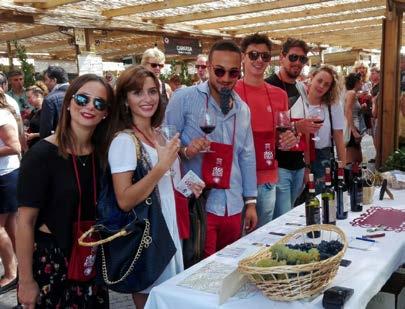
expochianticlassico.com/
Villa La Quiete dominates the hill of Castello in Florence, at the foot of Monte Morello. It takes its name from a fresco by Giovanni da San Giovanni titled La Quiete che domina i venti (Tranquillity reigning over the winds), dated 1632.
I found the name beautiful—just as magical as the structure itself and its garden, which has recently been opened to the public.
The villa is owned by the Tuscany Region and is part of the museum system of the University of Florence. Historically, it belonged to several prominent figures before being purchased in 1627 by Cristina of Lorraine, who restored it and ushered in its most splendid era.
Cristina commissioned the construction of a suspended passageway—a smaller variant of the Vasari Corridor—that connected the villa to an old Camaldolese monastery dedicated to Saint John the Evangelist of Boldrone. After Cristina's death, the villa briefly became a residence for nuns, then flourished again in luxury and furnishings from 1720 with the arrival of Anna Maria Luisa de’ Medici, who enriched it with pieces from Palazzo Pitti and Palazzo Vecchio
She redecorated the garden in the Italian style, thanks to Sebastiano Rapi, a botanist and former gardener of Boboli, who curated it and introduced botanical and fruit species from various Medici gardens. The garden stretches southward and is symmetrically
arranged with geometric flower beds, bordered by boxwood hedges and adorned with fountains
The view flows into a grand staircase, lined with magnolia trees, leading to a small grotto—currently not accessible.
Numerous internal paths lead to a small wood of holm oaks, laurels, and strawberry trees, intentionally grown tall to recreate a hunting setting, used as bird traps in the past.
To the east of the villa, bordered by a limonaia, lies a small nineteenth-century English garden, informal and asymmetrical.
The restoration work carried out by the University of Florence was immense and was celebrated during a grand reopening ceremony with Rector A. Petrucci and President of the Tuscany Region, E. Giani
The villa and its expansive garden are open to visitors on Saturdays and Sundays by appointment, until October 26, with a break during August
Visits last a maximum of one hour for groups of up to 25 people, at the cost of €5 per person.
Pets are welcome, but their presence must be communicated at the time of booking.
Therapy dogs or guide dogs for the visually impaired do not require special permission if wearing identifying harnesses
Per altre ulteriori informazioni, vi rimandiamo alla mail ufficiale edu(AT)sma.unifi.it


Michelangelo Consani e Mohsen Baghernejad Moghanjooghi a ieedificio57, San Gimignano.


ieedificio57 is a non-profit research space for visual arts that hosts both national and international events. The idea was conceived by artist Michelangelo Consani, who aims to connect his work with that of other creatives. It’s a one-on-one dialogue with artists whom he feels close to for "sentimental reasons"—a kind of encounter to better understand the other’s sensitivity and approach to artistic practice. The programming is developed in collaboration with the gallery ME Vannucci.
The “conversation” between Michelangelo Consani and Mohsen Baghernejad Moghanjooghi, held across the two floors of ieedificio57 in San Gimignano, touches on themes like ecology, community, humanity, vulnerability, and the future. A discourse that begins here but remains open-ended.
The project by Mohsen Baghernejad Moghanjooghi (Tehran, 1988, lives and works in Turin) unfolds on the ground floor with a refractory brick installation engraved with the phrase "We’ll See". The same brick
image appears printed on three silk scarves hanging on a nearby wall.
"We’ll see,"—not a wall to divide, but one to build—to make each element part of a whole. Bonding to create something not fixed, but constantly evolving. The bricks were designed by the artist and produced in a kiln.
“This composition, in a broader view, reflects on the human condition, on the impossibility of reaching a final meaning or conclusion, but also on the importance of the journey, of the connection between what is and what could be. The wall before us is ultimately a reminder that everything is in a state of perpetual becoming,” says Baghernejad Moghanjooghi.
Themes of construction and architecture often recur in the Iranian artist’s work. Before studying at the Academy in Turin, he worked in an architecture studio in Tehran and later as a restorer in Italy. His “walls” are never rigid—they can be crossed, softened,
reshaped—and his training as a textile designer overlays them with yet another layer. In the silk scarves, also designed by the artist, the wall changes again—it becomes soft, light, and enveloping, ready to come into contact with the wearer’s skin.
A vision of an open future, in human hands, is also what Michelangelo Consani (Livorno, 1971, lives and works in Castell’Anselmo) explores on the first floor of the building. Visitors are welcomed by a monochrome on wood titled “Silenzio Assordante” (Deafening Silence) (2011), made with radioactive Nori seaweed from the Fukushima Bay following the TEPCO nuclear disaster. The minimalist texture is formed by layered algae.
Consani frequently draws inspiration from Japanese culture. One of his key references is the botanist and philosopher Masanobu Fukuoka, pioneer of “natural farming” or “do-nothing farming.” His participation in a group show curated by Pier Luigi Tazzi in Nagoya in 2010 deepened his connection with Japan, eventually leading to a solo exhibition at Side2 Gallery in Tokyo.
At ieedificio57, he presents his new project “Fukushima 50”, inspired by the 2020 film by Setsurō Wakamatsu, which tells the true story of the fifty employees who stayed behind at the Fukushima Daiichi nuclear plant to prevent total destruction. Consani again confronts environmental and sustainability issues as political statements. His work
“Tanto per iniziare un discorso” a ieedificio57 Via di Berignano 57, San Gimignano (SI) visitabile su appuntamento fino al 31 luglio 2025 ieedificio57@gmail.com, mevannucci@gmail.com, +39 335 6745185, +39 328 6217610 www.ieedificio57.org
features a half-sphere of wood and iron, representing the denuclearized part of the Earth. On the other hemisphere, fifty gypsum fragments from early 20thcentury sculptures—depicting parts of angels—are amassed.
This apocalyptic vision is softened by the video “Fukushima 2025”, facing the sculpture “Soffio” (Breath) (2025), a plaster angel seemingly reaching toward the projection. Footage of today’s calm seas of Fukushima plays partly over the angel’s wings—a hopeful vision of a possible future.
Also by Consani are the works “quando il bambino era bambino” (2024), a wooden case containing small silver wings, and “così vicino così lontano” (2025), a small gilded bronze sculpture likely representing a crucified Christ—without cross and missing an arm. The small sculpture fills the room with a powerful light effect, darkening the surroundings and illuminating only the oval space around it. A poetic reminder of how small gestures can lead to change and light.
“Just to Start a Conversation” at ieedificio57 Via di Berignano 57, San Gimignano (SI) Open by appointment until July 31, 2025 ieedificio57@gmail.com | mevannucci@gmail.com +39 335 6745185 | +39 328 6217610 www.ieedificio57.org
a cura di Serena Becagli






There’s a new energy brewing between Via Palazzuolo and Via Maso Finiguerra, in the historic heart of Florence. An area often forgotten by the city’s more prestigious circuits is about to transform, thanks to Recreos, an ambitious urban regeneration project promoted by Fondazione CR Firenze in collaboration with the Municipality of Florence
The initiative aims to restore dignity and centrality to a strategic area, historically tied to craftsmanship, and now at the core of an operation that blends architecture, proximity economy, and community engagement.
The project, designed by LUCA DINI Design & Architecture, goes beyond redeveloping public space: it seeks to redefine the relationship between citizen and city by placing the social and economic fabric at the center.
A joint working group between the Foundation and the Municipality has been established to actively involve the community in building a shared and inclusive vision.
One of the most remarkable aspects of Recreos is the Foundation’s decision to renovate and offer 43 vacant spaces for free for three years, selecting artisans through a call for interest.
A concrete step to bring back to the streets the crafts, trades, and stories that once made Florence great— offering new opportunities to those struggling to find space today.
Among the planned transformations, Via Palazzuolo will be completely redesigned: the roadway will be leveled with sidewalks to promote slow mobility and create a more welcoming environment.
The area between Via Maso Finiguerra and Via del Porcellana will become a limited traffic zone, and Via Maso Finiguerra itself may soon turn into a new urban square.
Greenery will take center stage—with trees, vertical gardens, and urban furniture—bringing not just aesthetic value, but a better quality public space.
As Bernabò Bocca, President of Fondazione CR Firenze, stated:
“We’re ready to begin, alongside the Municipality— which I thank for accepting the challenge—with an ambitious investment that will restore dignity to a piece of Florence’s heart, generating both commercial and residential appeal.”
The numbers speak for themselves: over 220 artisans have already expressed interest. Their proposals? Varied and captivating: visual arts, tailoring, sculpture, luthiery. A creative geography that promises to turn this area into a new map of craftsmanship.
Recreos is more than a redevelopment effort. It is a vision of a living, sustainable, and participatory city—one that not only renews its spaces but seeks to regenerate the life flowing through them.

In Florence, beauty is not found only in museums or Renaissance palaces.
It lives in the details of a hand-crafted belt, in the shimmering patterns of marbled paper, in the scent of freshly worked leather.
It lives in artisan workshops—places where the city tells its story in silence, with the patience of those who know that good things take time.
It is in this spirit that the project “Discover the Florentine Botteghe. Get to Know the Real Florence” was born—promoted by the City of Florence and the Destination Florence Foundation, with the goal of valuing and sharing a heritage that does not belong solely to the past, but still has much to offer the future. An initiative that is part of the broader national campaign Enjoy Respect Florence, which itself is part of GDITS – Great Italian Destinations for Sustainable Tourism, funded by the Italian Ministry of Tourism. Its aim is to promote a more mindful approach to the city—one based on care, respect, and quality.
Botteghe are not just shops: they are laboratories of identity.
To enter one is to suspend time, to observe up close the gestures of a craftsperson, to hear their story, to understand their knowledge.
It is a way to discover Florence from the inside out, away from the busiest tourist routes—where every street becomes an experience and every object a story.
"Explore Botteghe Fiorentine" is an invitation to both residents and visitors to build a direct connection with local craftsmanship.
Through themed itineraries and encounters with master artisans, the public is actively involved in protecting this living heritage—not just by making purchases, but by participating.
The role of the Destination Florence Foundation is essential. With over 130 partner businesses, the foundation works to promote a more balanced and sustainable model of tourism, in which local excellence—such as artisan workshops—becomes central to both the narrative and the traveler’s experience.
Today more than ever, in a time marked by mass production and aesthetic conformity, rediscovering the value of handmade work is a cultural and political act. The Florentine Botteghe are not a nostalgic echo of a glorious past, but a living stronghold of beauty, skill, and identity.
To choose a bottega is to choose Florence— contributing, with care and awareness, to writing its future.

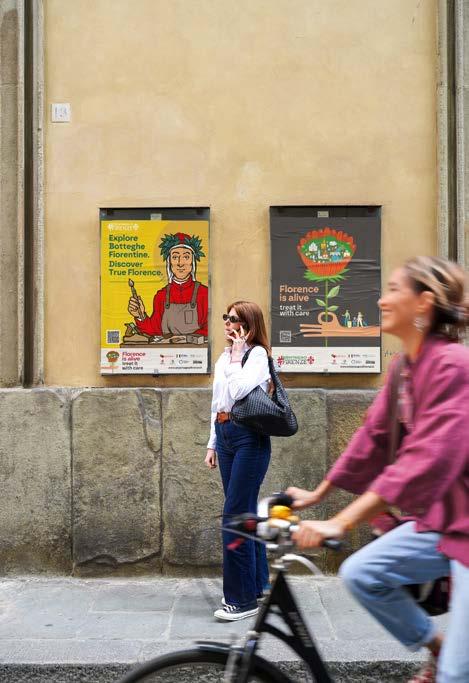

From September 12 to 14, 2025, the Giardino Corsini in Florence will transform into an open-air laboratory where craftsmanship engages in dialogue with contemporary art, design, and emerging social themes. For over thirty years, this event has celebrated creativity and skilled making, offering the public a chance to meet over a hundred artisans from all over Europe—ranging from masters of historic workshops to some of the most promising emerging talents.
The 2025 edition stands out for its ability to go beyond a traditional exhibition, becoming a true cultural work-in-progress, open not only to viewing but also to deeper reflection.
It is an invitation to rethink the very notion of craftsmanship—not just as a technical gesture, but as a living expression in constant evolution
Among the most engaging experiences is the “MACRO” project: an artistic provocation that asks artisans to reinterpret their creations on a monumental scale. These are not simple enlargements, but real metamorphoses, where everyday objects take on new identities and surprising functions.
While maintaining their usability, these works become tools for storytelling and imaginative stimulation, prompting the viewer to question the meaning and hidden potential behind every handcrafted piece.
The entrance to the exhibition path is marked by an impressive and theatrical installation: two giant legs, perfectly dressed, seem to descend from the ceiling of Palazzo Corsini and rest on the floor with irony and lightness.
This symbolic figure of the “macro-visitor” is designed for those who dare to look at the world from a new, outsized perspective—and embrace a shift in perception.
The entire exhibition layout is conceived as a sensory landscape, where materials, proportions, and colors tell a story of a new aesthetic of making. Not just a path to walk through, but an immersive environment to inhabit, inviting visitors to go beyond simple observation and enter into direct relationship with both the objects and the creators behind them. At the close of the event, in a concrete gesture of sustainability and reuse, the exhibition setup will be donated to the San Patrignano Community, where it will contribute to the creation of their Archive, with the support of the Simone Begani Fine Arts Gallery.
Artigianato e Palazzo thus reaffirms itself not only as a showcase of excellence but also as a place of thought, experimentation, and future vision
12/14 settembre

“These images don’t just show their journey of selfdiscovery — they reflect mine, too. I became part of their world, and without realizing it, they changed my life.”
With these words, young American photographer Sara Messinger introduces “Shadow of a Teenage Daydream”, the project opening on Thursday, June 12th at 6:00 PM at Crumb Gallery in Florence, marking her first solo exhibition in Italy.
A photographic story born by chance in the summer of 2021 from a meeting in Tompkins Square Park, in the heart of New York’s East Village, it developed over four years in close connection with a group of teenagers. “I approached them and asked to take their portrait. They accepted me into the group, and from that day — in early November 2021 — I kept meeting them. I spent almost every weekend fully immersed in their lives, watching them grow. I naturally became part of their world, eventually becoming a friend. These people are among the dearest to me. And without knowing it, by photographing them, I was also telling my own story.”
What emerged is a profound and moving generational reportage, capable of capturing the fragile yet powerful space of adolescence: the last days of youth, the first steps into adulthood.
On display, a selection of 14 analog photographs, drawn from a much larger and still evolving body of work. A project that delicately captures the everyday life of a generation that challenges fixed roles and builds its identity freely.
The teens Sara follows change their names, pronouns, and directions — fearlessly. The only constant is their pursuit of truth.
“I’m not interested in the perfect photo,” the artist explains. “I care about the honesty of the moment. When I shoot, I want my subconscious to take over. That’s when photography becomes a mirror for the feelings I can’t express in words.”
Shot on film, her images capture unfiltered truths. These are intimate portraits, born from trust and


shared time, offering authentic fragments of life.
Adolescence emerges as a suspended realm, a threshold brimming with potential and transformation.
In her visual language, Messinger merges the memory of ’80s and ’90s street culture with the legacy of great women photographers like Diane Arbus, Mary Ellen Mark, Rosalind Fox Solomon, and Consuelo Kanaga — a lineage of bold gazes that explore humanity with no filters or judgment.
“Shadow of a Teenage Daydream” is a close-up look at those growing up in a complex world, choosing authenticity day after day.
It is a shared journey, between the one photographing and the ones being photographed, in an attempt to shape an identity that refuses to be boxed in.

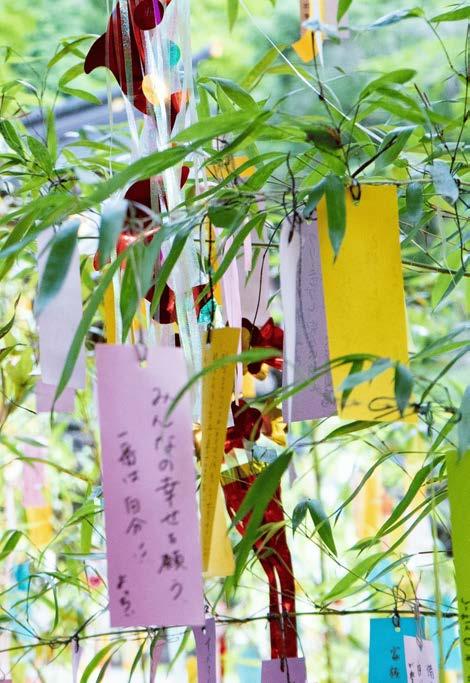
Many Japanese festivals are based on the ancient lunisolar calendar, which followed the movements of the moon and sun to accurately mark the seasons and the key periods for harvest. According to ancient superstitions and folk traditions, these celebrations served to ward off demons and evil spirits in favor of a good harvest.
Today, these events involve the entire Japanese population, not just rural communities. Festivals are held in urban streets and shopping centers of major cities, all decorated according to the celebration’s theme.
Among these matsuri (festivals), one of the most iconic is the Tanabata, the Festival of Wishes, celebrated in summer. It takes place on the seventh night of the seventh month (in fact, Tanabata literally means “seventh night”), and commemorates the extraordinary bond between two stars: Altair and Vega. Separated by the celestial vault and condemned to live on opposite sides of the Milky Way, these stars are allowed to meet only once a year, to relive their love.
According to legend, the young deity Orihime, daughter of TenTei, the Heavenly Emperor, was a gifted weaver who spent her days creating magnificent garments for the gods. Seeing her always alone and sad, her father decided to find her a husband, choosing Hikoboshi, the cowherd of the skies.
The two fell instantly in love, but caught up in their passion, they soon neglected their duties. The oxen wandered among the constellations, and the gods no longer received their beautiful robes.
Angered by their behavior, TenTei punished the young lovers by banishing them to opposite sides of the Celestial River—what we call the Milky Way—and turning them into stars.
They were forbidden to meet, except for one night each year: the seventh day of the seventh month, July 7th.
During the days surrounding this night, the Japanese celebrate the reunion of the two star-crossed lovers by writing wishes—often in the form of poems—on tanzaku, small colored paper strips that are then
hung on bamboo branches. These strips are brightly colored, reminiscent of the silk threads Orihime once wove.
In Florence, the Lailac Association is once again organizing a two-day event to celebrate the Tanabata Festival. On June 28th and 29th, La Limonaia and the Cloister of Villa Vogel will be transformed into a real Japanese village with free admission, featuring artisan stands, food & drink, and traditional items from Japan. In the garden, visitors will find the bamboo tree area where they can hang their own wishes, creating a vibrant, swaying forest of colors. There will also be an omikuji corner (Japanese paper fortunes) and a calligraphy area, where you can have your name written in kanji characters.
A wide range of events and activities will bring visitors closer to traditional Japan. You can watch or participate in workshops of taiko drumming and bon-odori dancing, accompanied by the melodies and rhythms typical of summer matsuri. There will also be martial arts demonstrations.
For those who want to fully immerse themselves in the Japanese atmosphere, there will be a yukata (summer kimono) rental and dressing service available from 5:00 PM to 8:00 PM.
And of course, there will be delicious Japanese food from Mangiappone’s refreshment area, offering traditional delights.
June 28 & 29, 2025
From 5:00 PM to 11:00 PM Entrance from Via delle Torri 23 or Parco di Villa Vogel (Via Canova)
Make a wish under the summer sky — filled with stars and good intentions.
a cura di Viola Rosai @violetinjapan
“To Leo, for a brave Martini.”
This is what Burt Lancaster wrote in the memory book of Leo Vadorini, the legendary bartender of Harry’s Bar Florence
It was 1952 when Enrico Mariotti was running his "Boston Bar." It was his friend Giuseppe Cipriani, founder of the renowned Harry’s Bar in Venice, who suggested he adopt that name. Thus began the story of one of Florence’s most iconic restaurants and cocktail bars—a place where elegance, hospitality, and charisma have blended for over seventy years, with Vadorini’s unmistakable talent defining an era.
Today, Harry’s Bar Florence is much more than a meeting point for connoisseurs: it is a true institution for those who appreciate the art of fine drinking. Ranked by The Daily Meal among the 150 best bars in the world—and in the top three in Italy—it is known for its signature cocktails: the iconic Bellini, the timeless Martini, the inimitable Negroni, and the sophisticated

French 75, all crafted with mastery and served with a touch of timeless class.
In a constant balance between tradition and innovation, the ownership has initiated plans to create an elegant and private outdoor area, where guests can enjoy their drinks surrounded by the beauty of Florence.
Harry’s Bar is all this—and more: a place where the past merges with the present, and every sip tells a story INFO
Harry's Bar
Via Il Prato, 40/R, Firenze 055 205 2105 harrysbarfirenze.it
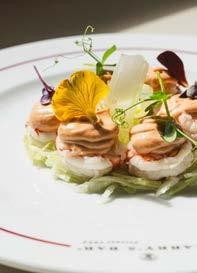
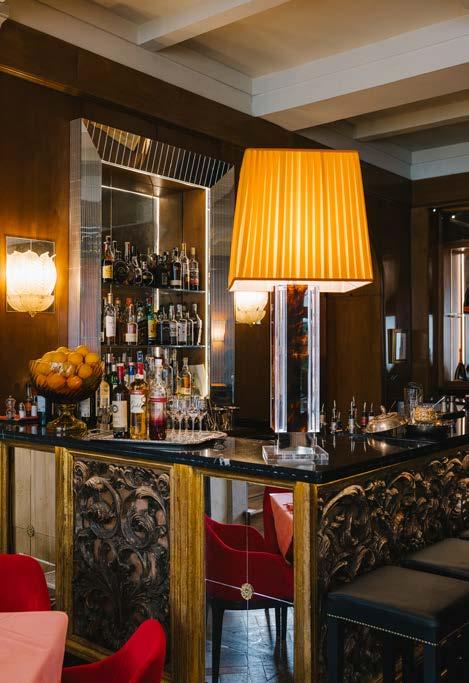
April 3, 2025 marked a key milestone
From the rebellious sound of Loredana Bertè to the refined songwriting of Roberto Vecchioni, from the Neapolitan pop of Nino D’Angelo to the elegant atmosphere created by Diodato. Add to that the contemporary classical music of Giovanni Allevi with the Italian Symphony Orchestra, and the highly anticipated reunion of the Gatti Mézzi
These are just some of the major highlights of the 2025 edition of Musart Festival, held with the support of Fondazione CR Firenze, and taking place from July 17 at the Parco Mediceo di Pratolino—a magnificent historic estate nestled in the hills above Florence, just a few kilometers from the city center. A UNESCO World Heritage Site, the park—dominated by Giambologna’s Colossus of the Apennines—boasts over 500 years of history. It once hosted performances for the Medici court and is now owned by the Metropolitan City of Florence
Thursday, July 17 (9:15 PM) will see Nino D’Angelo open the festival’s large open-air arena. The eternal scugnizzo will celebrate over 40 years of music,
performing timeless hits like Popcorn e Patatine, A’ Discoteca, and Maledetto Treno, as part of his "I Miei Meravigliosi Anni '80 - Estate 2025" tour.
Friday, July 18, again at 9:15 PM, brings the deeply emotional and critically acclaimed singer-songwriter Diodato to the stage. Known as one of the most powerful voices in modern Italian pop, he’ll offer a concert experience that builds steadily in intensity, becoming a shared moment of connection with the audience.
Saturday, July 19, Giovanni Allevi—the “philosopher of the piano”—will perform at Musart as part of his “Summer MMXXV” tour, accompanied by the Italian Symphony Orchestra. He will premiere “Concerto MM22 for Cello and Orchestra”, a hymn to strength and rebirth written during his battle with multiple myeloma.
Loredana Bertè takes the stage on Monday, July 21, with her "50 da Ribelle" tour. "You thought the celebration of my 50-year career was over? The party continues in 2025 with a brand-new tour—free,


honest, rebellious as I’ve always been," she announced on social media. She’ll be joined by her powerful Bandabertè, promising surprises throughout the show.
Returning after a memorable performance last year, Roberto Vecchioni will enchant the audience again on Wednesday, July 23, as part of his “Tra il Silenzio e il Tuono” summer tour. This theatrical concert blends songs, imagery, and monologues, merging new work from L’Infinito with his most iconic hits.
Thursday, July 24, will mark the grand finale: the reunion of Gatti Mézzi
After a 7-year hiatus, Francesco Bottai and Tommaso Novi return with their witty and sophisticated songwriting, blending jazz and swing in tales of old Tuscany. Joining them will be longtime collaborators Matteo Anelli, Mirco Capecchi, and Matteo Consani
New for 2025, Musart will offer free shuttle service (including golf carts) between park entrances and the concert area. Tickets are available at www. musartfestival.it, www.ticketone.it, and at Boxoffice Toscana outlets (link).
Before each performance, guided tours will be offered through the park’s most enchanting sites, including Giambologna’s Colossus of the Apennines, with special attention paid to environmental preservation.
Parking spots for cars and motorcycles near the park, with shuttle service to and from the venue, can be purchased in advance on TicketOne.
“The Parco di Pratolino is once again a highlight of the summer,” says Maria Oliva Scaramuzzi, Vice President of Fondazione CR Firenze

“We’ve supported Musart since 2018 because of its ability to combine great music with the promotion of our regional heritage. Moving from Piazza SS. Annunziata to the UNESCO-listed Parco Mediceo di Pratolino underscores this commitment to spotlighting a cultural symbol of Florence with quality musical events that draw wide audiences.”
Now in its 10th edition, Musart Festival is produced by Associazione Musart
Main supporter: Fondazione CR Firenze
With support from: Regione Toscana, Città Metropolitana di Firenze, Unione Montana dei Comuni del Mugello, Comune di Vaglia
In collaboration with: Toscana Promozione Turistica and AT – Autolinee Toscane
With the support of: Publiacqua, Chianti Banca, Unicoop Firenze, Findomestic, Sammontana, Cantina Vignaioli del Morellino di Scansano, and Prinz Artistic direction: Stefano Senardi.

Eclectic in its lineup yet remarkably punctual in its return, the Lucca Summer Festival once again offers a noteworthy schedule for the 2025 summer season. Spanning nearly the entire month of July, the festival will kick off just outside the city walls with the technically masterful and fast-paced American prog metal of Dream Theater on July 1st. Following this opening act are major performances including Thirty Seconds to Mars (July 5), Scorpions (July 10), and heavyweights such as Robert Plant, Nick Cave, and for the electronic crowd, the Pet Shop Boys. Headliners like Jennifer Lopez, Alanis Morissette, Simple Minds, and Morrissey will take the stage in the days leading up to the grand finale with Bryan Adams on Sunday, July 27
Just as varied, and catering to a wide range of musical tastes, is the Florentine Musart Festival, held in the Parco Mediceo di Pratolino. Among the 2025 highlights:
- Diodato on July 18
- Giovanni Allevi with the Italian Symphony Orchestra on July 19
- Loredana Bertè on July 21
- Roberto Vecchioni on July 23
- And, to close, the reunion tour of Gatti Mézzi
Additional Tuscan dates for the Gatti Mézzi duo— known for Vestiti Leggeri and Perché hanno sempre quella faccia—include:
- Musicastrada in Castelnuovo Val di Cecina on July 30
- Castiglioncello Festival on August 5
- Teatro delle Rocce in Gavorrano on August 23
- And the final concert in Piazza dei Cavalieri, Pisa, on September 9.
Elsewhere on the Tuscan music map:
- On July 4, Emma Nolde will bring her Novospaziotempo Tour to Montespertoli (FI)
- Marlene Kuntz will perform at the Anfiteatro delle Cascine
- On July 10, Tre Allegri Ragazzi Morti will land at Prato della Tinaia in Florence
- 99 Posse will return to the same venue on Thursday, July 17
Finally, a strong focus on the Italian music scene characterizes Montalfonso sotto le Stelle, held in Castelnuovo Garfagnana, where the lineup includes:
- Cristiano De André on August 6
- Stefano Bollani on August 9
- Fiorella Mannoia on August 11
- And The Kolors and Angelo Branduardi between August 19 and 21


There’s something deeply revolutionary about talking about sexuality outside of its usual spaces. Doing so in Prato, among ARCI clubs and consciousnessraising groups, with clear language and diverse perspectives, breaks an old silence—one that’s still all too comfortable. Because talking about bodies, desires, pleasure, and consent means challenging long-established cultural structures.
That’s precisely where the work of Re.Vulva begins: a transfeminist, community-based collective that, for the past two years, has been creating spaces where people can learn, unlearn, and desire with awareness.
We spoke with the three founders—Martina Cacciato, Costanza Gori, and Elisa Bartolini—to better understand how the project was born, what needs it responds to, and what kind of political and cultural answers it seeks to offer.
How can projects like yours help address a social issue that should be tackled by the State, but clearly isn’t?
We’re working precisely in the gap left by the State. In Italy, sex education isn’t guaranteed, and when sex is discussed, it’s approached with embarrassment, as if it’s merely a risk to avoid. We, on the other hand, put pleasure, awareness, and respect at the center.
This is the kind of work the State should be doing— in schools, clinics, and public spaces. But until that happens, we’ll keep doing it: we build culture, prevention, education, and new imaginaries. Sex education is one of the most powerful and underestimated tools to fight gender-based violence. Because violence doesn’t begin with a slap—it begins when we can’t name our boundaries, when we’re ashamed of our bodies, when no one has taught us how to say no or how to express a desire.
Talking publicly about pleasure is a political act. Restoring dignity to the playful, exploratory side of sex is necessary to build healthy relationships. Too many people—especially women and marginalized identities—have never been given the chance to ask themselves: What do I really want? Where is my limit? We try to offer them that space.
Next steps?
Right now, we’re working on a festival about menopause: three days to break the taboo and bring visibility to a phase of life that remains largely ignored. As always, we’ll mix talks, workshops, performances, and collective sharing. We want to give voice, tools, and presence—starting, as always, from the local territory.
Closing the circle
Talking about sex education today, in a country like Italy, is not simply a service—it’s cultural resistance. Re.Vulva chooses to exist in that margin where the State is silent, schools look the other way, and mainstream debate censors. But from the margins, you can see things more clearly. And perhaps even change them—one conversation at a time, one uncomfortable question at a time, one desire finally spoken out loud.
How did Re.Vulva begin? What people have you met along the way, and what needs are you trying to meet?
Re.Vulva was born in 2022 from an idea by Martina Cacciato, during a project aimed at young people. It all started with something that still sticks with us: no
one had heard of the Femidom, the internal condom. A contraceptive device that’s existed for decades, yet is practically absent from public discourse in Italy. From that came the urgency to create a space for spreading information, distributing tools, and above all, opening up a broad and accessible conversation about sexuality.
Soon after, Costanza Gori, a sex counselor, and Elisa Bartolini, a professional and sexual health educator, joined the project. Together, we built a collective that addresses sexuality, the body, and relationships in an educational, accessible, and non-judgmental way.
One of our most representative projects is “Comfort Zone”, a program designed for parents and caregivers to help them become credible reference figures when it comes to talking about bodies, pleasure, and relationships.
We also run a monthly sexual consciousnessraising group, inspired by the feminist groups of the 1970s, where people share starting from their own experiences. These are horizontal spaces, free of judgment, where words like desire, pleasure, and boundaries are once again given room to resonate.
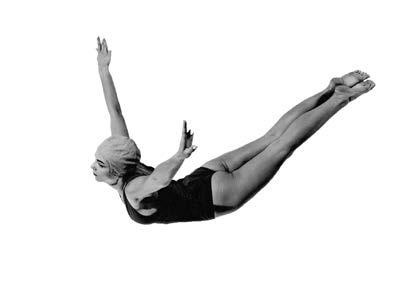

Florence welcomes a new cultural space with the opening of Max-y Gallery, taking place on Thursday, June 19 from 6:00 PM. Located in the vibrant San Niccolò district, in the heart of the Florentine Oltrarno, this new gallery is born with the aim of promoting and showcasing contemporary art talents, offering a platform for street artists, emerging creatives, and established names alike.
The name is inspired by Massimo Fattorini, the late owner of the space—a respected and charismatic antique dealer and a key figure in the neighborhood— and reflects the gallery’s welcoming spirit toward every form of art and artist.
The gallery is founded by Carla Bru, a pioneer of Florentine street art and owner of the historic Dhai Studio at via San Niccolò 44r, and Gisella Guarducci, an art curator.

For the opening, the duo has selected works from 11 artists they’ve collaborated with for years: Ache77, Carla Bru, Cecilia Cosci, Exit Enter, Josephine Frampton, Kraita317, Laben, Lapo Gargani, Cip2020, Lediesis, and Blub. Notably, they are the exclusive representatives for the works of Blub, Lediesis, and Cip2020.
Max-y Gallery is more than just a gallery: it’s an invitation to experience art as something vibrant, dynamic, and accessible. Its mission is to spotlight our “local heroes”—some of whom, like Blub and Lediesis, have gained international recognition—and to share their artistic vision with a wider, passionate audience.
The exhibition program will be extensive, including solo and group shows, artist talks, and outreach projects. The goal is to foster an ongoing dialogue between artists and the community, encouraging participation and engagement with contemporary artistic expressions.
“Florence has a long artistic tradition, and with Max-y Gallery we want to contribute to writing the present and future of art in our city, especially by giving visibility to local talent,” declared Carla Bru and Gisella Guarducci, the gallery founders.
During the public vernissage, attendees will not only have the chance to explore the featured artworks but also take part in a live performance involving the audience, the artists, and the gallery owners themselves.
Via San Niccolò, 71 rosso Firenze
Contatti: maxygalleryfirenze@gmail.com
+39 335 5884262
+39 335 7001126
@maxygallery
Il Consiglio I gamberetti possono essere protagonisti di ogni portata: con salsa di avocado e formaggio spalmabile o con stracchino e lattughino per una piadina fresca; oppure gratinati con pangrattato, succo di limone ed erbe aromatiche.

minuti 25 cottura 4 persone minuti 10 preparazione
•250 g frozen peeled shrimp tails (Coop)
•350 g canned cherry tomatoes (Coop)
•600 ml fish broth
•50 g celery
•1 hot chili pepper
•1 garlic clove
•1 untreated lemon
•extra virgin olive oil (Coop)
•parsley (Coop)
•slices of rustic bread, to taste
Finely chop the celery and place it in a large saucepan with some olive oil and the chili pepper, halved and deseeded. Add the cherry tomatoes with their juice, cook over high heat for 5 minutes, then pour in the fish broth. Bring to a boil and cook for 15 minutes.
Add the shrimp tails, cut in half, reduce the heat, and simmer for another 5 minutes. Finely chop the parsley and a small piece of lemon zest. Stir them into the soup just before serving, and serve with toasted bread.

Monte Argentario is a stunning promontory located along the coast of the Grosseto province in Tuscany. Surrounded by the sea, it is connected to the mainland by the town of Orbetello and two natural sandbars— Giannella and Feniglia—long sandy beaches that make it unique within the Tuscan coastal landscape.
Although commonly referred to simply as "Argentario" today, it is in fact Monte Argentario, later established as a municipality in the province of Grosseto. It includes two well-known seaside resorts: Porto Santo Stefano and Porto Ercole

Each year, Argentario attracts countless visitors, drawn by its breathtaking scenery and mild climate, making it an ideal destination in every season.
Sea lovers will discover some of Tuscany’s most charming coves—many of which are only accessible by foot or boat.
Outdoor enthusiasts can explore a network of marked and unmarked trails, perfect for hiking or mountain biking, with stunning views across Mediterranean scrubland and the deep blue sea.
For golf lovers, the Argentario Golf Club offers an 18-hole course set within 7 0 hectares of unspoiled nature, surrounded by olive trees and Mediterranean vegetation, in a naturally scenic amphitheater.
The largest and most important town on the promontory, Porto Santo Stefano takes its name from its main port, from which ferries depart daily to Isola del Giglio and Giannutri.
A modern marina nearby accommodates yachts and private boats.
The old town is worth visiting, with its quaint shops and churches, but the highlight is a pleasant walk along the pedestrian seafront promenade, lined with traditional restaurants and sea-view cafés.
The other gem of the promontory, Porto Ercole is smaller but considered more exclusive. Located on the opposite side of Porto Santo Stefano, it overlooks a charming harbor filled with yachts and private boats.
Daily boat tours depart from here to explore Argentario’s most beautiful beaches. The picturesque old town climbs the hillside and is accessible on foot. A panoramic terrace offers a view of the Palazzo dei Governanti, a 16th-century building protected by the Santa Barbara Bastion
Two historic fortresses sit on either side of the town: Forte Filippo to the north (also reachable on foot), and Forte Stella to the south—both open to the public during the summer season.
While not part of the promontory itself, Orbetello is considered the gateway to Argentario. It enjoys an exceptional location, right in the middle of its scenic lagoon.
Its historic center is vibrant and full of character— perfect for a stroll before heading to the sea to admire a unique ecosystem.
Orbetello also serves as the natural entrance to Maremma Grossetana, a land of open spaces, rolling hills, stunning views, and historic villages waiting to be discovered.
Among the seven inhabited islands of the Tuscan Archipelago, Isola del Giglio is often considered one of the most beautiful. It can be reached in about an hour by ferry from Porto Santo Stefano.
Upon arrival, visitors are greeted by a dreamlike landscape of beaches and coves washed by crystalclear waters. Some of the most beautiful include Cala dell’Arenella, Spiaggia delle Cannelle, and Cala degli Alberi
Smaller than nearby Elba Island, Giglio is perfect for those seeking a vacation immersed in peace and unspoiled nature.
S.M. Novella
Central Train Station
Piazza dell’Unità
Piazza S. Maria Novella
ArnoPiazza Goldoni
Ponte Alla Carraia
Piazza S. Trinita
Palazzo Strozzi
Mercato Centrale
Piazza San Marco
Giardino dei Semplici
Piazza della S.S. Annunziata
Galleria Dell’ Accademia
>> SANTA CROCE
Piazza Santo Spirito
Ponte S. Trinita
Cathedral of Santa Maria Del Fiore
Piazza della Repubblica
Piazza San Firenze
Piazza della Signoria
Piazza Mentana Mercato Nuovo
Ponte Vecchio
Galleria degli Uffizi
Ponte Alle Grazie
Piazza Dei Pitti
Giardino di Boboli
>> SANTO SPIRITO AND SAN FREDIANO
>> DUOMO AND SAN LORENZO
>> SANT’AMBROGIO
>> SAN NICCOLÒ
>> SAN MINIATO AL MONTE AND PIAZZALE MICHELANGELO Get
Piazza Santa Croce




























